Economía Circular desde la perspectiva de un empleado de la salud by Ana Jaramillo (SPanish version)
El domingo, 5 de abril de 2020, ¡el clima en Londres estaba excepcionalmente bueno! Si no fuera porque estamos en confinamiento, probablemente hubiese pasado el día en un parque o disfrutando de un asado con mi familia y amigos, pero poniendo de mi parte, estaba en casa siguiendo las recomendaciones del gobierno…
Para quienes no me conocen, nací en Colombia, soy parte del Club de Economía Circular de la ciudad de Londres y contra todas las apuestas, tengo algunos años de experiencia trabajando en uno de los laboratorios clínicos más grandes del Reino Unido. El 31 de enero del 2020, la BBC de Londres reportaba los primeros casos de COVID-19 en el Reino Unido y el Prof. Chris Whitty, asesor médico del gobierno afirmaba que el servicio nacional de salud (NHS) estaba “extremadamente bien preparado para manejar infecciones”. También se reportaba la confirmación de los primeros 10,000 casos en China y la muerte de 213 personas. En el resto del mundo solo se llegaba a 100 casos esparcidos en 22 países. Mientras tanto, en mi lugar de trabajo comenzábamos a recibir las primeras muestras para COVID-19. Esas muestras solían llegar en cajas de alta seguridad, marcadas con etiquetas fluorescentes que resaltaban el peligro de su contenido. Tal como llegaban, eran llevadas a un cuarto especial para manejo e identificación de patógenos de categoría 3 (CL3), o para algunas muestras de categoría 2, que pueden representar riesgo para el personal que las maneja. En China, el 2% de la población infectada estaba muriendo. COVID-19 es un nuevo virus y por lo tanto la única información disponible era lo que llegaba desde Wuhan. Lo único que se sabía a ciencia cierta, era que este nuevo virus estaba matando a la gente a causa de problemas respiratorios agudos. Se especulaba sobra una posible transmisión aérea. A este punto yo ya leía los reportes diarios publicados por la Organización Mundial de la Salud. ¿Cuál es mi principal preocupación? A nadie le gustaría ver a sus seres queridos afectados por una enfermedad. Aparte de mi propia salud, me preocupan mis padres y familia en Colombia, mi sobrino Sebastián quien con tan solo 4 años ha estado hospitalizado en múltiples ocasiones a causa de su débil sistema respiratorio, mis vecinos, hay tanta gente por quien estar preocupada… Uno de los miembros de mi equipo que cuenta con más experiencia, me dijo que yo no tenía nada de que preocuparme, pues las muestras que yo manejaba no eran para COVID-19. Sin embargo, el número de muestras para cuadro viral respiratorio, el cual incluye otros tipos de corona virus, había tenido un incremento del 100% de diciembre a enero y la cifra para las dos primeras semanas de febrero era aún mayor. Siendo un laboratorio privado, pronto comenzamos a sentir la presión por parte de nuestros clientes, en su mayoría médicos que atienden por medicina prepagada, quienes buscaban una solución confiable para que sus pacientes pudieran ser examinados. ¿Cómo hacer para incrementar nuestra capacidad de análisis? Mientras que el Servicio Nacional de Salud tiene dificultades para incrementar la cantidad de pruebas hechas a diario debido a la escasez de reactivos necesarios, en Alemania hay laboratorios que aún no llegan al tope de su capacidad y tienen disposición para recibir nuestras pruebas. De esta manera, muy pronto comenzamos a enviar muestras. Las muestras que se están enviando son hisopos para PCR, los cuales se considera, pueden ser manejados con un nivel de riesgo inferior a los lavados bronquiales o muestras de esputo tomadas en su mayoría de pacientes hospitalizados. Es así como hoy en día puedo fácilmente llegar a estar en contacto con muestras para COVID-19 mientras trabajo. Desde el departamento de Recepción de Muestras y pasando por Bioquímica, Microbiología y Virología, bajo el uso de elementos de protección personal, todos hemos sido testigos de la demanda exponencial de pruebas relacionadas con COVID-19. Con el objetivo de proteger el personal, el laboratorio ha implementado el distanciamiento social y ha cambiado nuestros turnos de trabajo. Pero al igual que cualquier otra persona calificada como trabajador clave, continuamos haciendo nuestro trabajo y no pararemos al menos que el virus nos agarre y la sintomatología se haga evidente. En mi grupo de trabajo somos aproximadamente 60 personas, de las cuales a 3 se les ha confirmado tener el virus, 3 más están esperando el resultado de sus pruebas y otros cuantos se han aislado por causas distintas. Como cualquier otra persona responsable, yo solo salgo para trabajar, hacer mis compras o hacer un poco de ejercicio, e inmediatamente regreso a casa. Esto no es fácil, es aburridor, pero al mismo tiempo, sé que cada día de encierro representa un día más cerca al día en que podré abrazar a mis seres queridos nuevamente. Para el domingo, 05.04.20, Sky News reportaba 47,806 casos confirmados en pacientes hospitalizados y casi de 5,000 muertes en el Reino Unido. Esos números representaban figuras inferiores a las reales pues como bien ellos mismos lo indicaban, no incluía datos de casos externos y por lo tanto personas como mis compañeros de trabajo y gente a quien se le había hecho la prueba por medio de servicios de salud privados, no estaban siendo considerados. A mediados de esta semana, el sistema de conteo fue ajustado para incluir casos externos al NHS. Para el Viernes Santo, se confirmo la muerte de otras 980 personas después de haber contraído COVID-19 y así sobrepasar los números reportados por Italia y España durante sus peores días. El número de personas contagiadas hoy supera los 74,000 y ha cobrado casi 9,000 vidas. Sin embargo, el confinamiento parece comienza a dar resultados y los indicadores de nuevos contagios comienzan a bajar. Hoy en día, los contagios se duplican cada 5 días, comparado con cada 3 días al principio de la semana. En este momento mi trabajo no está en riesgo, pero para muchos, el tener que pagar un arriendo o hipoteca y alimentar a sus familias, de repente se ha convertido en su principal motivo de preocupación. Entre tanta incertidumbre, ¡yo me he encontrado reflexionando y encontrando razones para mantener la esperanza! Aunque los encuentros personales no son posibles, la crisis ha despertado la unión de las personas. · Familias y amigos se están poniendo en contacto con aquellos para quienes era difícil encontrar el tiempo. · Padres e hijos se encuentran en la mesa diariamente para almorzar y comer. · Y aunque yo no haga parte del NHS, le agradezco a quienes cada jueves a las 8:00 p.m. salen a las calles a agradecer la labor de los trabajadores claves. ¡Cada aplauso me llega al corazón! · Los llamados de solidaridad no se han hecho esperar …voluntarios de todo tipo se han ofrecido para darle un buen uso a su tiempo libre y están enseñando, transportando medicinas y alimentos, hablando con quienes se encuentran solos, cocinando y mucho más. También hemos visto como nuestro planeta se ha recuperado de nuestras insostenibles prácticas y estilos de vida durante el tiempo que la gente ha estado confinada por la crisis. Según reporta Carbon Brief, China tuvo una reducción temporal del 25% de sus emisiones de CO2 durante su confinamiento a causa del Covid-19, en Nueva York los niveles de monóxido de carbono se redujeron en un 50% de lo que generalmente se reporta para el mes de marzo, los peces han regresado a los canales de Venecia y en Colombia, los delfines han regresado a la bahía de Cartagena. De acuerdo con la evidencia, parece ser que nuestro planeta está tomando un descanso mientras que los seres humanos nos encontramos confinados. ¿Realmente es necesaria una crisis de esta magnitud, con el elevado costo en vidas humanas que estamos viendo, la única forma que tenemos para entender que este planeta es nuestro único hogar, el único que nos da alimento, agua, aire fresco, todo lo realmente necesario y hasta más? Creo que ustedes estarán de acuerdo conmigo al decir que la Economía Circular tiene el potencial para balancear nuestras necesidades y las de nuestro planeta, sin el catastrófico costo en vidas humanas que estamos presenciando. Este es un tiempo para reflexionar y reevaluar lo que es importante, entender cómo vamos a actuar y las acciones que debemos poner en práctica para convertirnos en una mejor sociedad una vez esta pesadilla haya terminado. ¡Recibiremos una lección de todo esto! ¡Estoy segura de que la circularidad tiene ese poder!, ¡Nosotros tenemos ese poder! Sabemos que, así como el mundo necesita una fuerte estructura financiera, esta tiene que ser desarrollada de la mano de un fuerte soporte social, al mismo tiempo que protegemos nuestros recursos naturales y nuestro medio ambiente. Las soluciones ya existen, solo necesitamos expandirlas por todo el mundo a la misma velocidad con que el COVID-19 lo ha hecho. Mientras pasamos esta crisis, yo continuaré dando lo mejor de mi durante el análisis de muestras patológicas y espero que fuera de reducir la exaltación y el frenetismo característico de nuestras vidas, esta crisis no los afecte demasiado. ¡Este es mi mensaje de esperanza y solidaridad, estamos unidos y lo superaremos juntos! Un fuerte abrazo, Ana María. T: @AnaM_Jaramillo
0 Comments
Today is Sunday, 5th April 2020, the weather in London is exceptionally good! If it was not because we are in lockdown, I would probably be in a park or enjoying a bbq with my family and friends. But I am playing my part and I am staying at home following the government advise.
For the ones of you who do not know me, I am Ana and part of the Circular Economy Club London team, I was born in Colombia and against all the odds, I have a few years of work experience in one of the largest private pathological laboratories in the UK. On 31st January 2020, BBC News reported the first two cases of COVID-19 in the UK, Prof. Chris Whitty, chief medical officer for England, said the NHS was "extremely well-prepared for managing infections" and, it was also reported China had 10000 confirmed cases and 213 death. The rest of the world only had 100 confirmed cases spread over 22 countries. Meanwhile, at my place of work, we were receiving the first few samples for COVID-19 testing. Those samples used to come in highly secured boxes with a bright sticker, highlighting the high-risk classification of its content. They used to be taken straight away to a containment level 3 facility (CL3), used for the isolation and identification of Category 3 pathogens, and a select number of Category 2 pathogens that may pose a risk to the laboratory staff handling them. In China, 2% of the infected population was dying. As it is a new virus, there was no much information available but what was being reported from Wuhan. The only certainty we had, was that this new virus was killing people by causing severe respiratory problems, there was speculation about whether or not this new disease was airborne. At that point, I was already reading daily updates from the World Health Organisation. What is my main reason for concern? No one would like to see their loved ones being affected by any disease. Apart from my own health, I am worried about my parents who are in Colombia; Sebastian, my 4-year-old nephew who at his short age has on several occasions been admitted into hospital due to his very sensitive respiratory system, my neighbours, there are so many people to be concerned for... One of the senior members of my team in the lab told me that I had nothing to be worried about because the samples I was in contact with, were not for COVID-19 testing. However, the number of samples for viral respiratory screen, which includes a different strength of coronavirus, had had a 100% increase from December to January and the figure was even higher for the first two weeks of February, Being a private laboratory, soon we started to feel pressure from the clients, most of them private doctors, who were desperately looking for a reliable solution to test their patients. How could we increase our analysis capacity? While the NHS is straggling to increase the number of tests done per day due to a shortage of the necessary reagents to do the analysis, there are labs in Germany with spare capacity. Soon, we started referring COVID-19 samples to them. The samples that are being sent abroad are PCR swabs, considered to be of lower risk than bronchial washing or sputum samples taken from hospitalised patients. It is how nowadays I can easily get in contact with COVID-19 samples on a regular basis while at work. From sample reception to Biochemistry and Microbiology, under the use of personal protective equipment, we have been witnesses of its exponential demand. In order to protect staff members, the laboratory has implemented social distancing and has changed our working patterns. But like any other key workers, we continue doing our job and will only stop in case we show symptoms. In my department, we are about 60 people. So far, 3 have tested positive, 3 are waiting for results and a few more are in self-isolation for varies reasons. Like any other responsible person, I am only going out to work, do my shopping, go for a short exercising activity and back home. It is not easy and rather boring but I know every day I stay at home, it also means I am one day closer to the day I will be able to hug my loved ones again. Today, Sky News reported over 60,000 confirmed cases in hospitals and over 7,000 deaths in the UK alone. If that information is right and, as they said those numbers are only counting for hospitalised patients, it means that real figures would be a lot higher as my colleagues and private sector patients who have tested positive, are not being taken into account. At the moment my job is not at risk, but for many, having to pay the rent and feed a family has suddenly become their main reason for concern. In between so much uncertainty, I have found myself reflecting and finding reasons to keep me hopeful! Even though meeting people is not possible, the crisis has awakened the world demand for unity.
We have also seen how our planet has recovered from our unsustainable practices during the time people have been confined during this crisis. According to Carbon Brief, Coronavirus temporarily reduced China’s CO2 emissions by a quarter during the lockdown, in New York carbon monoxide levels are half of what is normally recorded for March, fish are returning to Venice’s canals and, in Colombia, dolphins are back in Cartagena's bay. By looking at the evidence, it seems planet Earth is taking a break while humans beings are confined. Is it really a crisis of such magnitude, with such high cost in human lives the only way we, human beings have to understand that planet earth is our only home, that provides us with food, water, fresh air and all that is really essential and more? I believe you will agree with me if I say that Circular Economy has the potential to balance planet Earth's needs without the terrifying cost in human lives that we are seeing. This time is a time for reflection and revaluation of what is important and how after the current nightmare has passed, we are going to act and the actions we need to take to become a much better society. We will learn from it! I believe circularity has that power! We have that power! We know that as much as the world needs a strong financial structure, it has to be developed hand by hand with a strong social foundation and protective of our natural resources and the environment. We know the solutions are already here, we just need to expand it all over the world at the same speed COVID-19 has done it. While we go through the crisis, I will continue at work doing my best in the process of pathological samples being tested. And, apart from slowing down our regular hectic life-style, I hope the crisis does not affect you too much. This is my message of hope and solidarity! We are united and will go through it together!! Best regards Ana 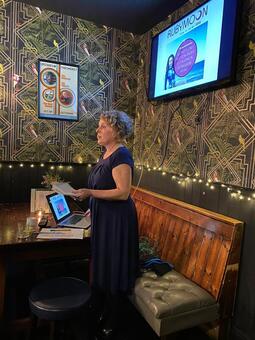 Author: Iris Lammertink This evening was by women for women. It was organised by the lovely Jo-Anne Godden, who you may know from Ruby Moon - ethical and sustainable swim and activewear, and Nina Emett, who you may know from her organisation PhotoDocument. There were many inspiring persons attending. There were writers, photographers, DJs, activists, and many more diverse women. Most of them had one thing in common. They work, in their own way, to one goal: making the world a better place by working towards a more social and environmentally friendly society. The evening started off with drinks at the bar, and not many people were there yet, when I arrived. The atmosphere was warm and welcoming, and slowly more people came in and started chatting with one another as time went by. After a good while, when everyone was provided with a drink, the main part of the evening started. The dinner. Everyone moved up a level in the bar, and we all got two cards: a card with a skill that an attendee had donated, and a card with a quirky fact about someone in the room.The point of the evening was to find out from whom the fact was, and trade or keep the donated skill. Starter When everyone was seated, Jo-Anne and Nina started off with a presentation about their businesses and why it is so important that they do what they do. Jo-Anne presented how Ruby-moon is a company that makes swimwear out of ghost fishing nets and does not use toxins amongst other harmful materials. Ruby Moon’s products are ethically made and are not just good for the environment because they have an environmentally friendly production but are also helping to solve the problem of ocean pollution. Furthermore, they invest in women across the world with micro loans. Something that really made me think was the phrase: ‘’Women in the west will change the world’’ This resonated with me, because I realised that by being a western woman, I have money that I can spend. This means that I have the power to support other women with that, by spending it wisely and considerately on products. The consumer has a lot of power on what the world will look like in the future. In the meantime, a delicious vegan starter was served of spaghetti Bolognese with a touch of lime. The second speaker was Nina, who presented how FotoDocument makes positive impacts. She explained that photography and visual imagery can be a powerful communication tool to inspire active global citizenship. She tries to showcase positive solutions to environmental problems worldwide, which then can help people engage with and understand the effect of global problems. One of the things the organisation does is supporting talented female photographers with funds. She spoke about how: ‘’only 7% of directors are female. This results in having a male’s perspective on most things represented in the media’’ Since I have learned in my communication course at Deusto University, Spain, that the media is very powerful in shaping people's minds, it is important to take this fact into consideration regarding equality. If we want equality between genders, we need to start telling stories from female perspectives too. That is why Nina believes in, and supports positive stories made by women. Dinner After these inspiring presentations, it was time for dinner. However, before starting to eat, everyone was encouraged to change seats so that new conversations could be started with new people. The dinner that was served looked beautiful and was entirely vegan as well. It was mashed potato with kale, and a tasty meat and gravy substitute. Dessert After chatting and eating for a while, it was time for dessert. While eating dessert, it was time for the attending women to speak about what they do in their professional life, in 2 minutes. There were many inspiring pitches of overcoming barriers, illnesses, and inequality, but also stories of success. The atmosphere was enthusiastic, and we were all rooting for everyone who stood up and spoke. The topics that came by were breast cancer, refugees, disability, deforestation, being a female entrepreneur, and many more. We ended with some networking time and exchanging skills and quirky facts. This dinner made me realise that there are so many women out there making positive impacts while making a living and being financially independent. We just do not see them as often in the spotlight. The main takeaway for me is that women are just as capable to bring positive change, while doing business, as men, and we could use that as an advantage to bring positive change for the world faster! When only half of the population is participating, things take longer to get done, and we are running out of time. 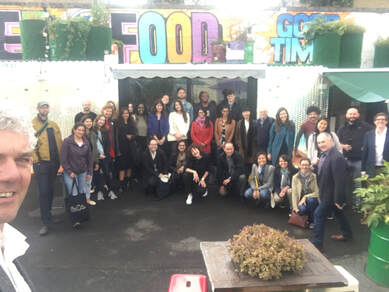 Author: Natalie Ibbott, SOENECS Associate and CEC London Volunteer #CEtourCECLDN #CEweekLDN It was a drizzly morning, but our spirits were far from dampened while we waited outside Shepherds Bush Market underground station for the arrival of our 30 #CEtourists. A few months ago, during a Circular Economy Club London event planning session, David Greenfield – lead organiser for CEC London had a brainwave “Why don’t we run a tour for Circular Economy Week London of Circular businesses that we can visit using the Circle Line?!” It sounded slightly crazy, but also a lot of fun and so the idea was born. In 2018 the Circular Economy Club London team had painstakingly collected, researched and mapped details of every Circular business and initiative in London. And so, with some help from the tube map we selected possible stops for the tour and started talking to our potential hosts. Through or existing network there was not much cajoling required to fill our itinerary. So, on the morning of 14th June, our #CEtourists started to arrive and it turned out to be a fantastically international delegation. We had Circular Economy professionals, academics and enthusiasts from France, Italy, China, Australia and even a group of students accompanied by their professor from the University of Columbia, New York who had flown over especially for Circular Economy Week London (that’s some field trip!) Our first stop was Opencell. We walk the unlikely route through the stalls at Shepherds Bush Market before turning into the old Laundry Yard. What may look like a collection of 45 shipping containers is actually a science lab-come-product design studio and it’s pretty special. Opencell offer infrastructure and a like-minded community for early stage startups and designers; enabling them to work in their studios and biolabs and bring their biotech prototyping ideas to fruition quickly. We are met by Francesco Verderosa and Oksana Bondar from Opencell residents Biohm who start our guided tour. Biohm is the brainchild of Ehab Sayed, whom alongside a team of scientists, designers and innovators is hoping to embed circular practices, sustainability and future technologies in the construction industry. As they put it “To allow nature to lead innovation and create systems that benefit the human, the environment and the economy”. One of Biohm’s leading projects is Triagomy. It’s biomimicry at its finest – an interlocking construction system that can be reused, reconfigured, rebuilt with some impressive carbon, waste and energy savings. Our tour of Biohm’s materials research lab showcases their focus on using waste as a resource and producing innovative materials. They have waste from many sources, including Heathrow Airport’s grounds maintenance. One of the most impressive products that we are shown is Mycelium. It’s a fungus, it grows, it can ‘learn’ to consume other materials…even plastic (my mind is blown at this point). Biohm have turned it into insulation board that more flame retardant than anything currently on the market. Fran opens up the front of one container and the smell and colour overwhelms us…oranges. Two floor to ceiling shelving units full of them. “Google give all of their employees freshly squeezed orange juice every day. This is just the waste from yesterday.” I’ve worked in waste management for 15 years and there are times (like the first time I walked on an open landfill site) when the scale of the problem really hits home; this was one of those times. All those oranges, from just one office, in just one city in just one day. But Biohm are using them to create construction materials, it’s a truly circular process and the potential to scale up is enormous. Our minds full of information and ideas, we make our way to another container where Thomas Fudge, CEO and Founder Of WASE is there to showcase their multi award winning and, quite literally, lifesaving work. WASE have developed a decentralised wastewater treatment system that sustainably treats waste and generates energy. They also provide sustainable wastewater consultation and remote sanitation solutions and their commendable goal is to provide sanitation and clean water to everyone who needs it. Thomas talks us through some of their projects and the harsh reality of living with inadequate access to sanitation (the day to day for some 2.3 billion people worldwide). It’s something we take for granted so much that we barely think about it; but Thomas paints a grim picture of the spread of disease through lack of sanitation and particularly how this impacts of women during menstruation. It’s all quite sobering. Thankfully WASE are helping to initiate change. One project in India is working to develop a community biogas sanitation system that uses microbial electrolysis cells to treat wastewater onsite in two days, generating electricity which in turn powers a water purification system to provide safe drinking water for the community. Very much in the community spirit of Opencell, WASE are also working with Biohm to develop onsite wastewater treatment so that it be reused within a building. The system will generate biogas from the household waste to provide heating and electricity to the household reducing the carbon footprint. The nutrients in the wastewater are a natural fertiliser for the plants, creating an entirely circular system where all waste is reused. Our final part of our tour of Opencell is a presentation from Dr Thomas Meany who co-founded Opencell with the RCA’s Helene Steiner. Tom was Cambridge University Physicist who met Helene working in biotech labs and they subsequently founded a biotech startup. They developed the idea of providing low-cost, high-tech space and with the help of a specialist property developer and SynbiCITE, an industrial accelerator, managed to convince the London Borough of Hammersmith and Fulham Council to let them use the land. Tom takes us through the theory behind biotechnology (what you get if you cross hardware, software, coding and plants) and then there’s one last chance to hear from Oksana and Fran from Biohm before we head on our way. Back on the Circle Line and our next stop is Westbourne Park. After a short walk we are standing at the bottom of the Trellick Tower, a 1972 Grade II* listed tower block designed by the architect Ernő Goldfinger. (Quick fact: Ian Fleming hated the Trellick Tower architect so much that he named the James Bond villain after him. Ernő wasn’t too pleased about this, but they settled out of court.) The ground floor and basement are home to our next circular business and social enterprise – Goldfinger Factory and their co-founder, Marie Cudennec tells us about their mission “Combining craft and community to create social and environmental impact.” They do this incredibly well. We enter through the furniture showroom with beautifully designed and made furniture and homewares destined for both domestic and commercial customers. Marie takes us down to their basement workshop which is full of work in progress including a table, the top of which is made from reclaimed Victorian parquet flooring. Marie tells us “We could have sent the flooring to India or China to have it stripped and ready to use, but that’s not what we’re about.” Everything they do at Goldfinger Factory is focussed on Circular Economy principles and bettering and building the local community. As well as offering designers, makers and craftspeople a platform to develop and sell bespoke furniture and interiors, Goldfinger Factory provides a teaching academy for less advantaged young people. The academy provides training in traditional craftsmanship, specialising in carpentry, upcycling and material reclamation. Goldfinger provides an amazing platform to turn wasted potential and wasted materials into gold (part of their Midas touch philosophy). It just so happens that Goldfinger Factory has the best Italian café for miles around. The Sicilian chef and his team have prepared a feast for our lunch and there is no danger of any food waste, it’s absolutely delicious. Full of Sicilian fayre, we hop back on the Circle Line to make our way to Moorgate station. From there it’s just a short walk to the London Waste and Recycling Board (LWARB) and their circular office. LWARB’S space is all reclaimed and recycled. The wooden floor was once the ballroom at the Royal College of Surgeons, there is worktop space made from recycled glass by Urbnrok, tables made from recycled yoghurt pots by Smile Plastics, circular carpet made by Interface and furniture remanufactured by Rype Office (more from them later). We are met by Phil Guthrie, Collaboration Hub Project Officer who introduces our #CEtourists to LWARB and their work through three main workstreams – Resource London, Advance London and Circular London. As part of the Advance London business support programme SMEs are supported in their transition to circular business models. Their Circular Economy Accelerator Programme is also set up to take startups through a six month programme to commercialise their circular products. We’re also here to meet two more circular businesses. The first is ALDStone a circular supplier, distributer and consultancy specialising in the built environment. Susana Núria Guerrero López is the CEO founded ALDStone in 2012 and enthusiastically talks to us about her company’s unique systems for thin, lightweight wall and floor materials which are easily installed and can be reused at other locations. This is a revolutionary concept that disrupts conventional business models in construction, where the reuse of materials is generally not the norm and where the amount of waste generated in the build and demolition processes is massive. ALDStone transforms the lifespan of materials completely. As well as providing a modular solution which is quick to install and change as required, Susana tells us how they also offer rental and leasing, including a system of repair. Next up is Santiago Navarro, CEO and Founder of Garçon Wines – the world’s first 100% recycled PET flat wine bottle. Santiago’s personality is far from flat and his enthusiasm for his product and the Circular Economy is something that we at CEC London have enjoyed at many of our events this year. Garçon Wines have already won numerous awards and even as I write this, they are picking up a National Recycling Award. Santiago gives us an overview of his product - 87% lighter and 40% spatially smaller than a glass bottle of the same volume. This means that not only is the bottle made from post-consumer waste, but it’s also saving costs and emissions when it comes transportation. The bottle is based on the classic Bordeaux shape…but it can fit through your letterbox! Continuing the alcohol theme, we have one last presentation from Conscious Gin who make their product using potatoes that would otherwise not make it to the supermarkets because they are too small (!) and go to waste . It was the second time in a week that we at CEC London had had the pleasure of their company – having been part of our food waste as a resource event just two days before. Unfortunately today we didn’t have time for the Co-founder, Phil White to whip us up some samples but we were nonetheless delighted to introduce Conscious Gin to our #CEtourists. This is Phil’s ‘other’ project; he is already part of LWARB’s accelerator programme with his revolutionary company Sustainability Cloud, a zero waste real time concrete trading platform. It’s now almost 3pm and time for our last stop on our tour. We head back to Moorgate to find that the Circle Line has been suspended! This was not part of the plan. However, The Northern Line comes to our rescue and we jump on a very hot tube to London Bridge (well, we had to show our visitors what travelling in London is really like) before walking west along the river. There is no better place to complete our journey than the hotbed of Circular SMEs that is Sustainable Bankside. Just a couple of years ago this place was just a warehouse; but it has been transformed into a hive of activity, hosting 25 sustainable start ups with more than 250 people, co-working space, private offices and meeting rooms. They even have barista training facilities, a bar and a shop selling products from their residents. Gabriella Hernandez, Communications Lead for Sustainable Workspaces (the parent company of Bankside) gives us a tour before we meet Greg Lavery, Founder of Rype Office who specialise in refurbishing and remanufacturing office furniture and completely refitting office spaces, circular-style. They take the durable parts of existing pieces of furniture and then rebuild around this core structure. This means that customers get what is essentially a new item of furniture, but at a fraction of the cost and with a clear environmental conscience. Greg tells us that not only is Rype Office focused on the environmental benefits of their circular business model; but the refurbishment and remanufacturing is carried out by long-term unemployed people with disabilities. It’s as much about having a positive impact on people’s lives as it is about having a positive impact on the planet. After Rype, we make our way over to see Lily Courtauld, Director of Content and Tara Button CEO and Founder of Buy Me Once, who are on a mission to find the longest lasing version of everything. It’s quite some ambition, but since launching in 2016 Buy Me Once has gone from strength to strength. Each product on their website has been rigorously researched and tested to ensure that it will last a lifetime (or near enough!), therefore reducing consumption, raw materials and waste. Lily tells us that one of their most defining moments was Ashton Kutcher declaring on Facebook that he loved the ideas behind the website! And so, to end our day of touring Circular business, for Circular Economy Week London via the Circle Line we and our 30 #CEtourists finish with a toast, or rather we finish with Toast Ale. There are bread and dough puns aplenty from David Ryan ‘Head Breadwinner’ at Toast, a company that have so far rescued over one million slices of waste bread from the sandwich industry and turned them into beer. Around 44% of all bread made in the UK goes to waste; that’s a staggering figure and it’s something Toast Ale are raising awareness of through their product. What’s more, they donate all of their profits to charities, such as Feedback, that work to food charities that are working against food waste and striving to feed people in need. We finish by sampling some Toast Ale whilst debriefing and chatting about all the amazing companies, products and initiatives that we have seen. Our tourist from Sydney, Australia told me that it was “the best event of the whole of Circular Economy Week London”, which I think means it was a success. It certainly feels like we have learnt and experienced a lot; so here’s to next year’s tour! The Circular Economy Club London Team are: Dr David Greenfield, Natalie Ibbott, Ana Maria Jaramillo Abadia, Angelique Belle and Sat Pillai. You can find out about future CEC London events here www.CircularEconomyClub.com Twitter @CircularEClub Twitter @CEC_LDN Instagram @Circular_Economy_Club_London See and add to our list of Circular Economy Activities across 67 world cities LINK See our London Map of over 150 Circular economy businesses: LINK Check out our London CEC Fast Five videos from March 2018: LINK 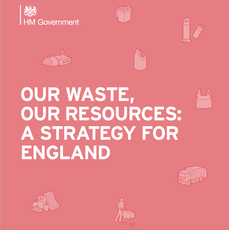 The HM Government OUR WASTE, OUR RESOURCES: A STRATEGY FOR ENGLAND was launched on 18th December 2019. The consolidated view from Michael Gove is:
As a research practice, our MD, Dr David Greenfield, shares his thoughts on the new strategy, having been part of separate workshops held by Defra, the Local Authority Waste Network Chairs and SUEZ. SOENECS, under David's leadership also created an extended producer responsibility data model for local authorities, commissioned by SUEZ. Dr Greenfield comments "The Strategy is very bold in its ambition, indeed, calling for a move to a Circular Economy, a new Extended Producer Responsibility and Deposit Return Scheme are things that the sector have been calling for a while. However, and there is always a however, the ambition should not be confused with an action plan, of which there is not one. The Strategy includes within it 7 different consultations, up to 2022, with all new legislation being implemented by no later than 2023. In many cases, these consultations will be necessary to ensure that all parties have input to the final solutions, but we have to be wary of reducing the ambition. As a sector, we have a once in a generation opportunity to influence a national strategy that will live beyond, in many of our cases, our working lives. Let’s take this opportunity to work together to influence the consultations, whilst not losing the aim of delivering a Circular Economy that respects and protects Natural Capital." SOENECS are able to offer support to local authorities and private sector companies to help understand the challenges and opportunities presented by the new Strategy, please get in touch if you would like an initial discussion. 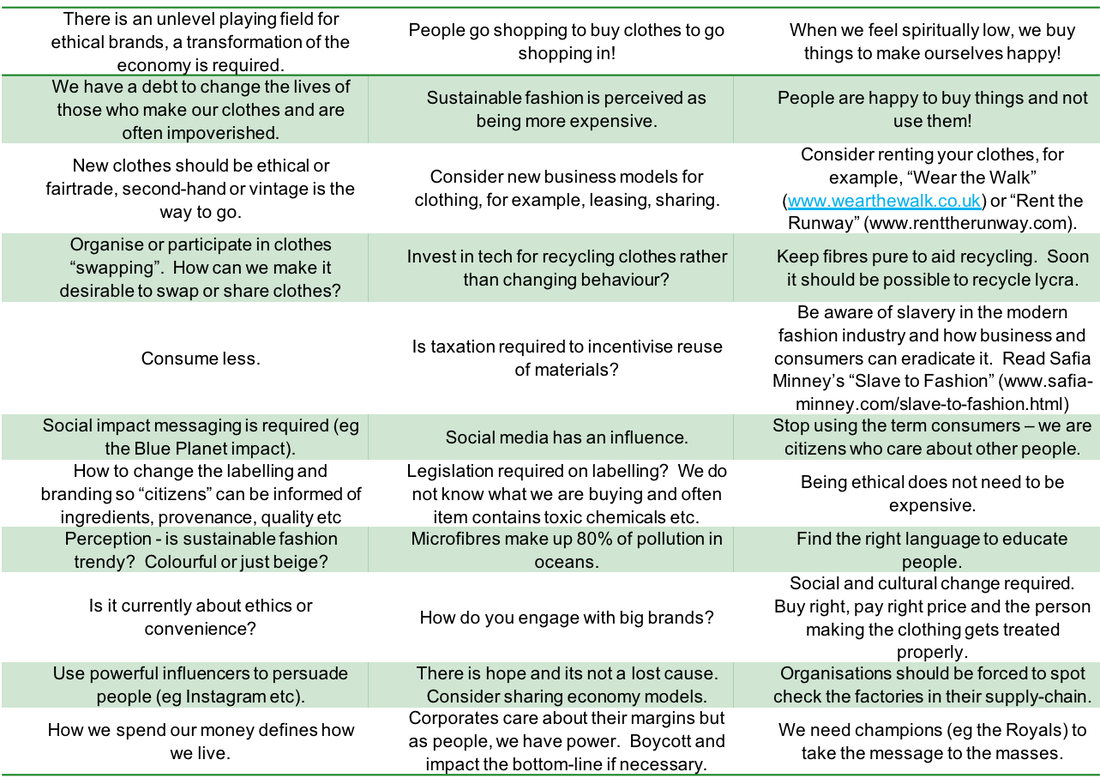 Circular Brighton & Hove meeting on 5th September 2018, University of Brighton, Grand Parade Campus By way of an appetizer for the Circular Brighton & Hove meeting on 5th September 2018, attendees enjoyed a fascinating tour of the Brighton Waste House given by Duncan Baker-Brown, the award-winning architect from BBM Architects. The Brighton Waste House represents the development of a ‘living laboratory’ for ecological architectural design and the building is Europe's first permanent public building made almost entirely from material thrown away or not wanted and is an EPC ‘A’ rated low energy building. Further information is available at arts.brighton.ac.uk/projects/wastehouse. This was followed by drinks networking with food obtained via the “Too Good To Go” app (www.toogoodtogo.co.uk), enabling attendees to rescue delicious food at great prices from local restaurants and shops whilst saving the environment at the same time. Dessert took the form of stimulating debate on the subject of “Fashion and Sustainability, are they compatible?”, facilitated by an expert panel, chaired by Dr David Greenfield, organiser of the September Circular Brighton & Hove event, from SOENECS Ltd www.soenecs.co.uk consisting of:
The feedback from attendees was brilliant, with people loving the food from sushi to organic sausage rolls and a lively debate that inspired people to change their perspective of fashion J Greenfield 13.09.18 The first wednesday of every month is EDC and CEC club night...this month on the 4th April, 16 of met at Grow 40 in Kensington Gardens to discuss all things circular and agree a plan for the next twelve months There were a few actions agreed, here is a quick summary:
In addition, here are a couple of interesting links: Article by Peter on CE https://www.brightonandhoveindependent.co.uk/news/business/brighton-chamber-the-circular-economy-1-8401064 The London Mapping results from my London CEC nmapping event https://docs.google.com/spreadsheets/d/1la2-pf1VWK2aNBKDNrI5aSVzL9kRz34tGnbQ16z5Hmc/edit#gid=0 Institution of Civil engineers – CE and the built environment https://www.ice.org.uk/news-and-insight/the-civil-engineer/june-2017/circular-economy-in-the-built-environment Westminster Sustainable Business Forum – CE and Built environment http://www.policyconnect.org.uk/wsbf/blog/circular-economy-and-built-environment and an article from 2013 I wrote…on CE and the waste Hierachy…enjoy https://www.mrw.co.uk/knowledge-centre/comment/merging-the-circular-economy-and-waste-hierarchy/8654179.article We look forward to planning the Circular City at our next event on 2nd May 2018 - Venue TBC The Brighton & Hove “Eco-Dinner Club” and “Circular Economy Club (CEC)” present a Christmas Bubbles and Burgers dinner with the theme of Tech and how to be sustainable…
Prepare for Turkey Burgers and Xmas pud and possibly even a quiz! The timings for the night are: 7pm – Aperitif served in the members lounge upstairs (ask for The Brighton & Hove Eco- Dinner Club) 7.30pm – sit down for mains and dessert 9.30pm – extended discussions and sampling of Grow40’s extensive wine and port menu If you would like to join us, please Register and Complete the menu by 30th November 2017 at this link: https://www.surveymonkey.co.uk/r/YRTXBFQ The Concept We invite a select but diverse group of individuals that we believe will gel and generate innovative opportunities that will lead to action. To date we have organized the Brighton & Hove Beach & Street Clean, a tour of Shoreham port, supported the Plastic Pledge and expanded the dinner club to West London. The Venue: We have visited 7 different venues in the last 12 months are now Nomadic and using venues that gives us sustainable, local and good value food. In May, we visited Silo, in August we had an urban Forage and “use by date picnic”, we have now had two events at Grow40 . The guests We invite Brighton & Hove colleagues that we feel will bring challenging and innovate approaches to the dinner. The Bill We go dutch until we have a corporate sponsor! The attire Whatever you want, but generally smart casual – Xmas jumpers if you want! The organisers Paul Fowle (ex investment banker), Richard Vernon (Technical advisor) John Kessels (editor: Cornerstone journal) & myself (circular economy advisor) came together through mutual friends and similar views We hope that you will be able to attend! lick here to edit. 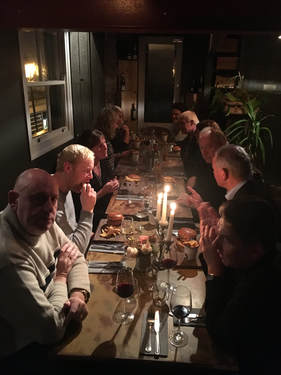 We were hosted by Grow40, Kensington Gardens, in the heart of Brighton’s North Laine, in their cosy, relaxed Members’ snug in their bistro and wine bar where they cook with home-grown food and a great gin selection. Thirteen attended, including designers, engineers, priests with a few environmentalists thrown in! Over an aperitif of either champagne, cocktails or a virgin cocktail, we networked in the comfy sofas and chairs of the upstairs members’ area. It was a pleasure to meet a diverse range of people and get to know some new faces. As host for the night, I introduced the Eco-Dinner Club and in Peter Desmond's absence (the CEC Brighton & Hove organiser), I introduced the Circular Economy Club (CEC). This was easier for me as I am also London Local Organiser for CEC. The two Brighton & Hove clubs have agreed that in the spirit of partnership, we will coordinate our events to avoid clashes and ensure that we have complementary activities. We began with roundtable introductions (who you are, what you do and why food and circular economy is important or of interest to you). Many attendees focused on food waste and the role of retailers in reducing food in stores and at home. We were lucky enough to have Steve Creed, from WRAP, there and he gave a great insight to the work that the whole supply-chain has been doing to reduce waste on the food to fork journey. The challenge is to continue to tackle the enormous amount of food waste generated in our homes; so lets promote not buy more than we need, reduce our avoidable waste and reuse our food wherever we can...then put in a composter or food waste bin. It was while doing the round table that the burgers of organic beef, fish or polenta were presented with panache and tasted as good as they looked. We continued our discussions until the desserts arrived and were impressed by the colours and taste! All this while supping on light and fruity white and red wines, organic of course. We agreed that circular bubbles and burgers worked and that we would have the "Dinner" every first Wednesday of the month... (except December when we will meet on Tuesday 5th). Our outings for next year will be to the Brighton Wind Turbines, urban forages and other events that lead to actual Change, rather than just talking about change. We look forward to seeing you at one of our next events. David Greenfield - Co-founder of the Brighton & Hove Eco-Dinner Club @BHEcoDinner |
Archives
April 2020
AuthorS
Dr David Greenfield Archives
April 2020
|

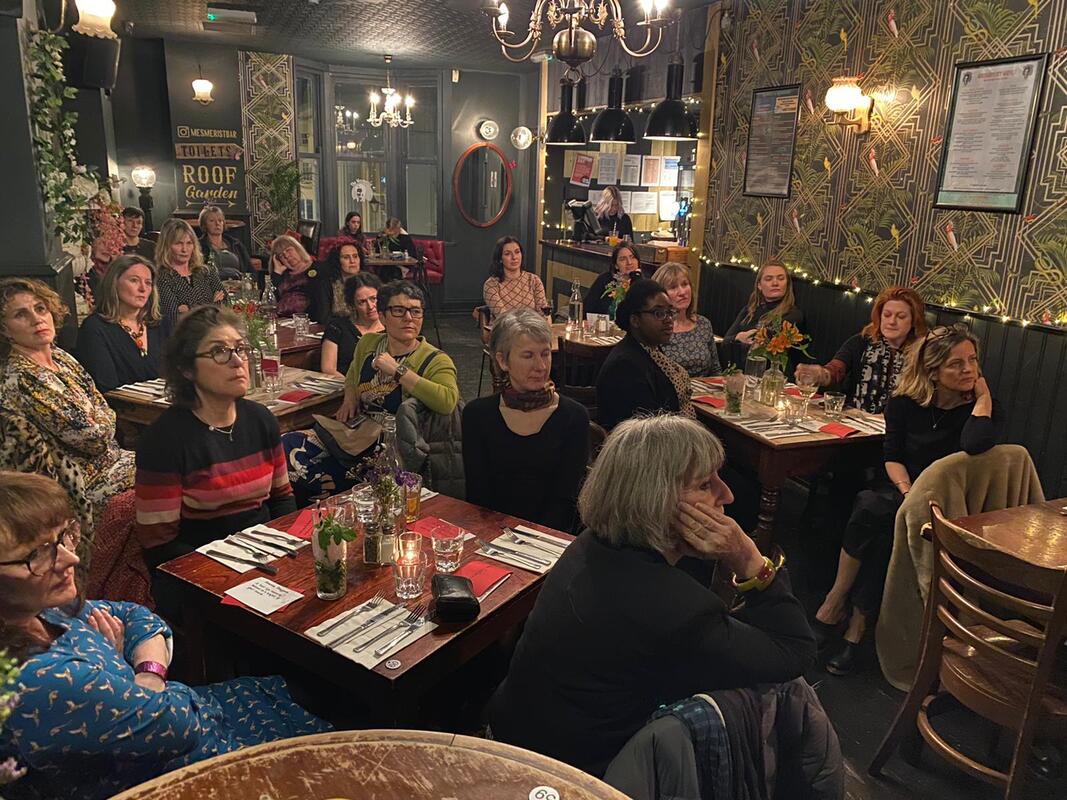
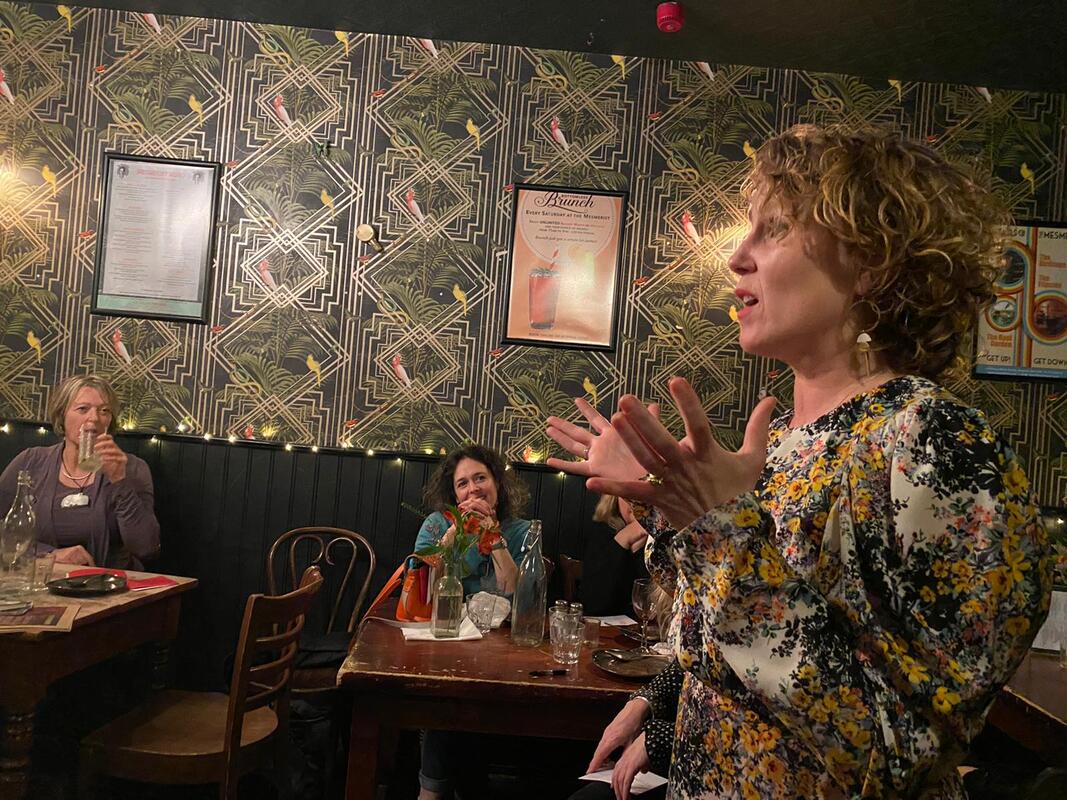
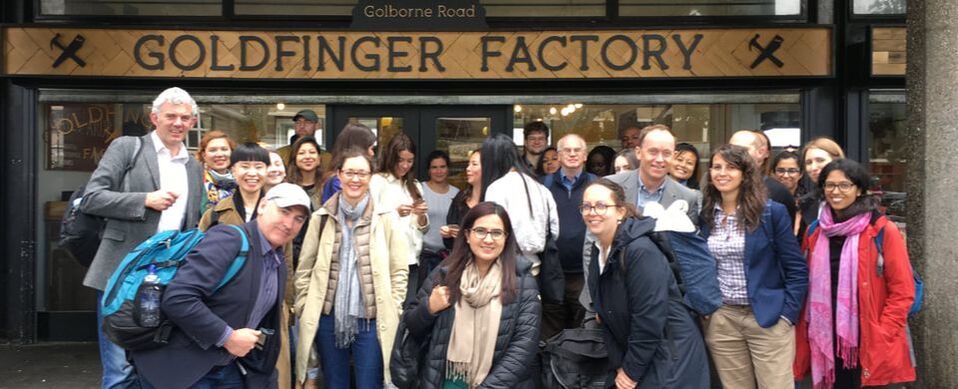
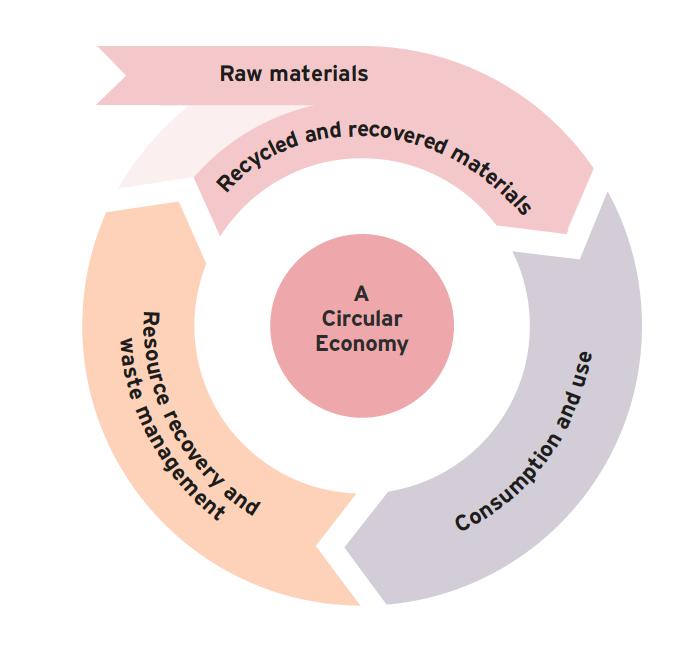
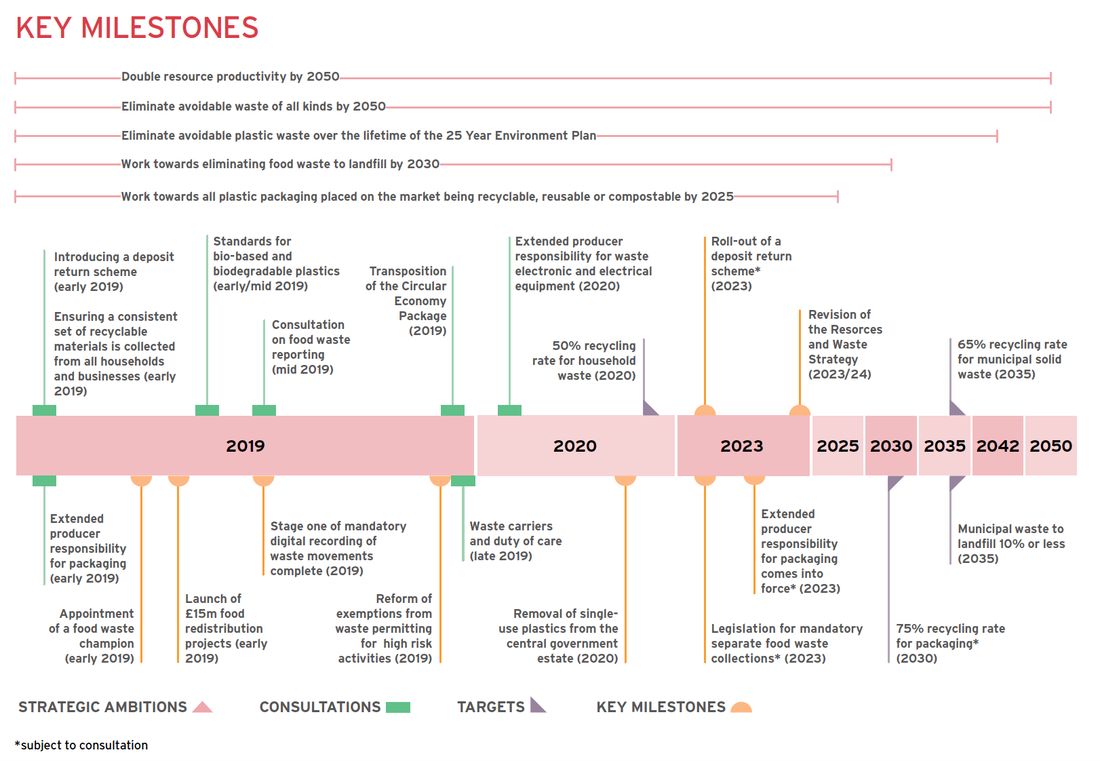
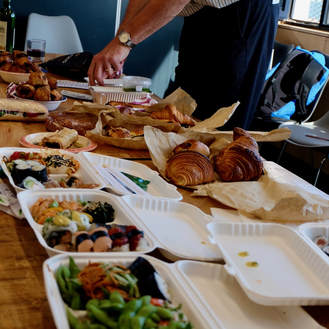
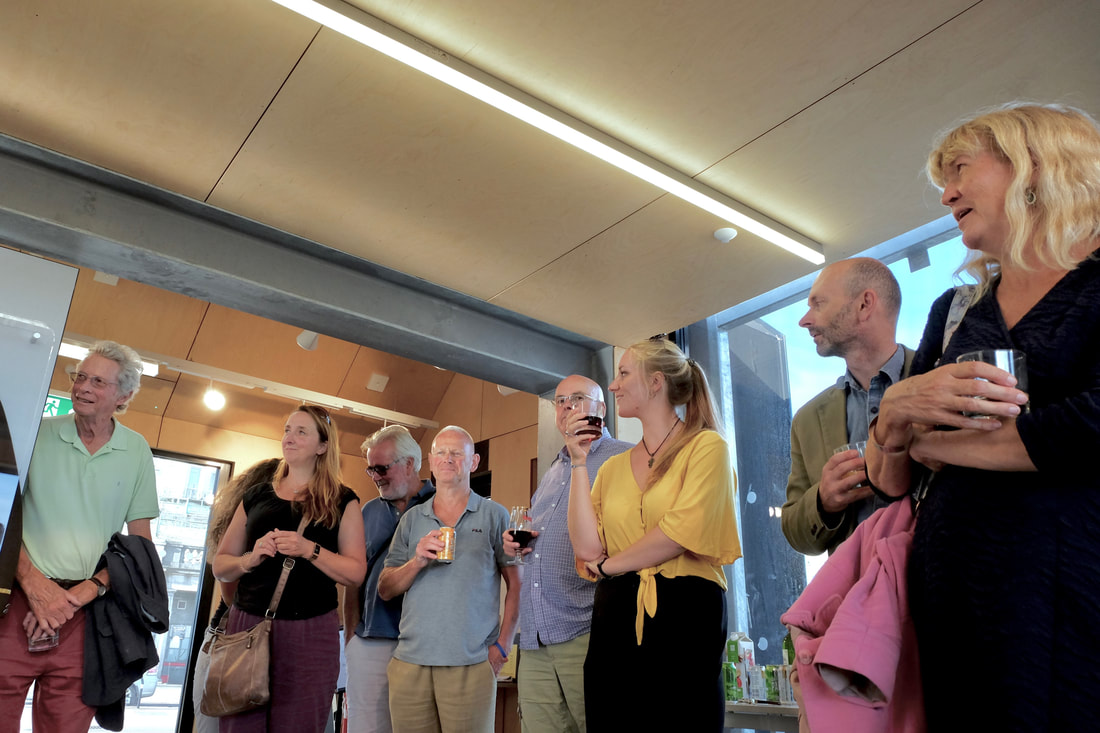

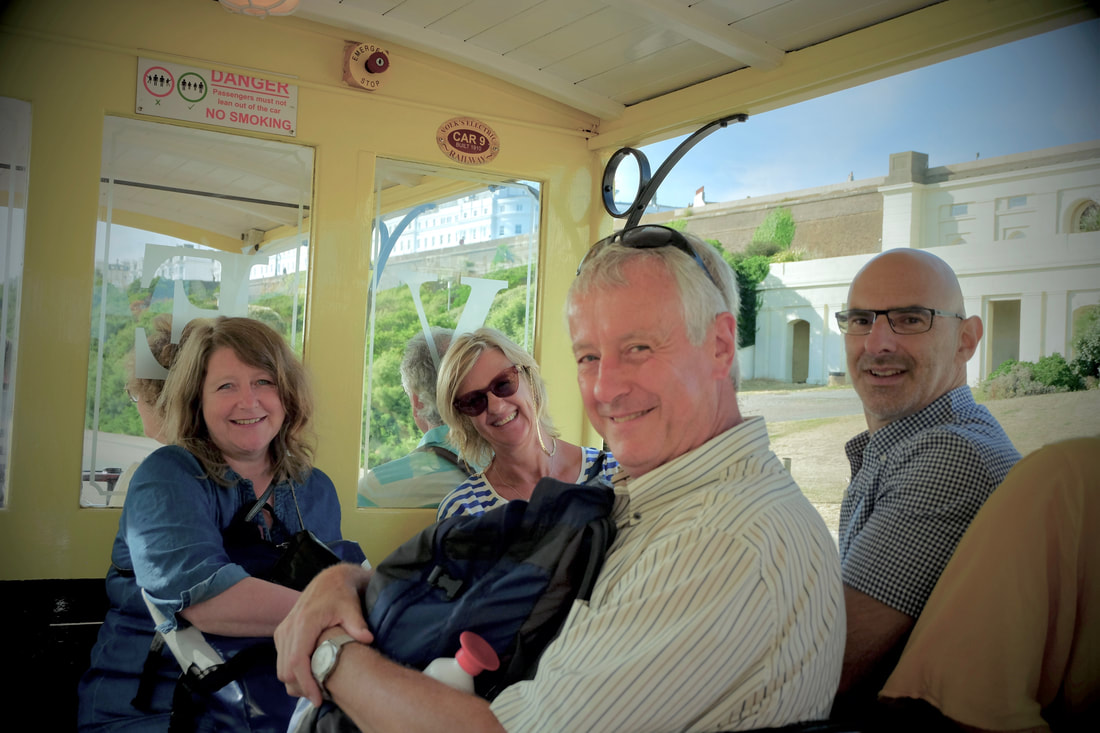
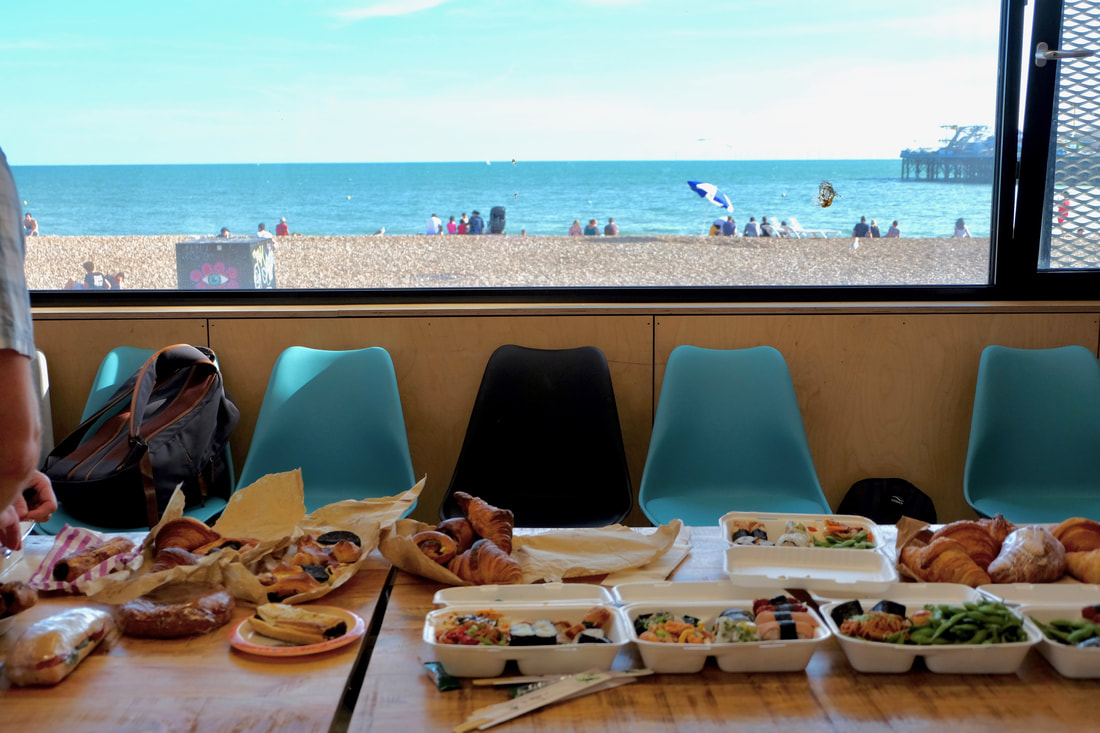
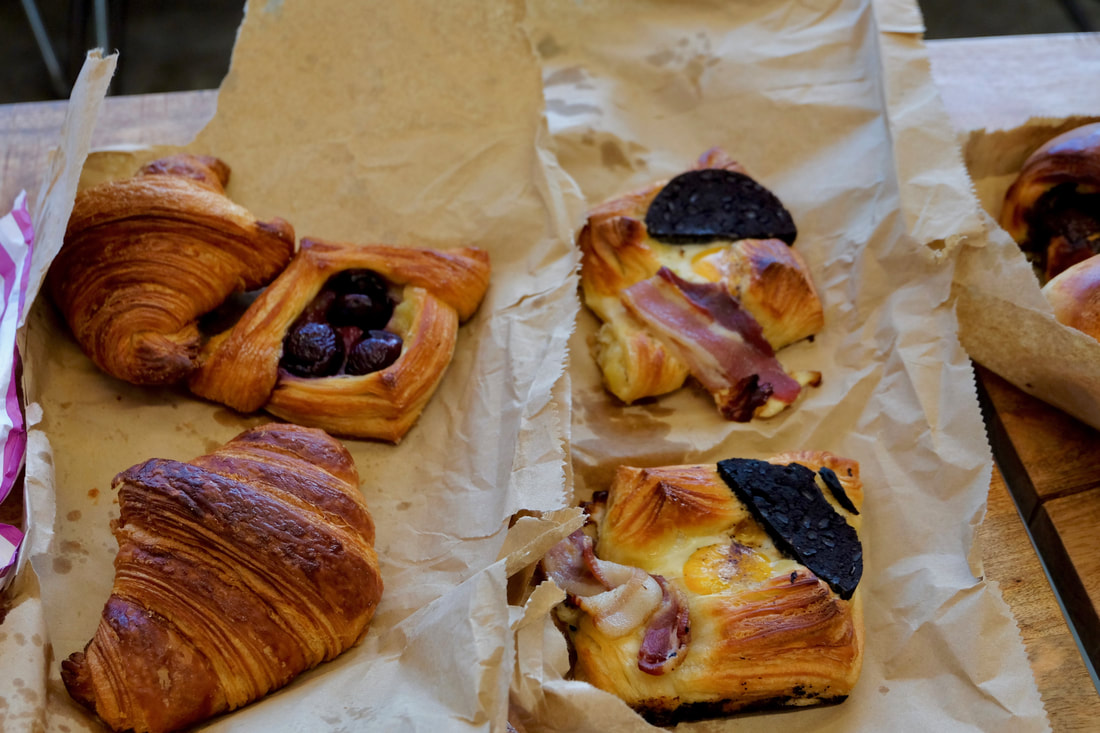
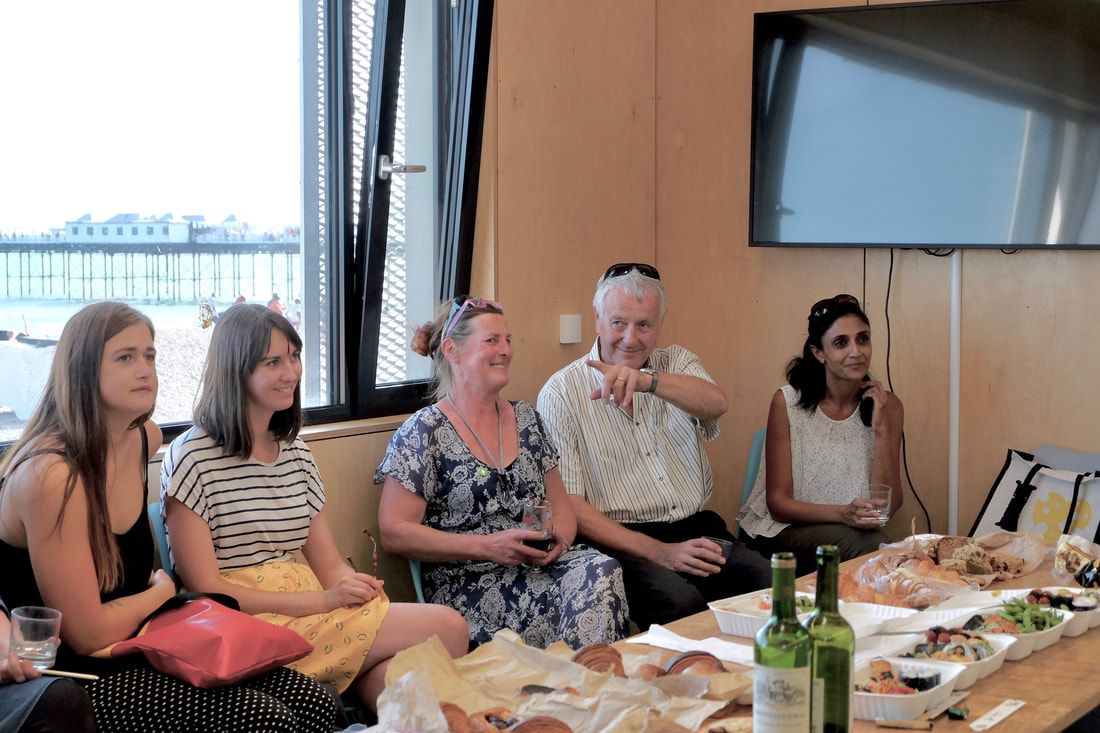
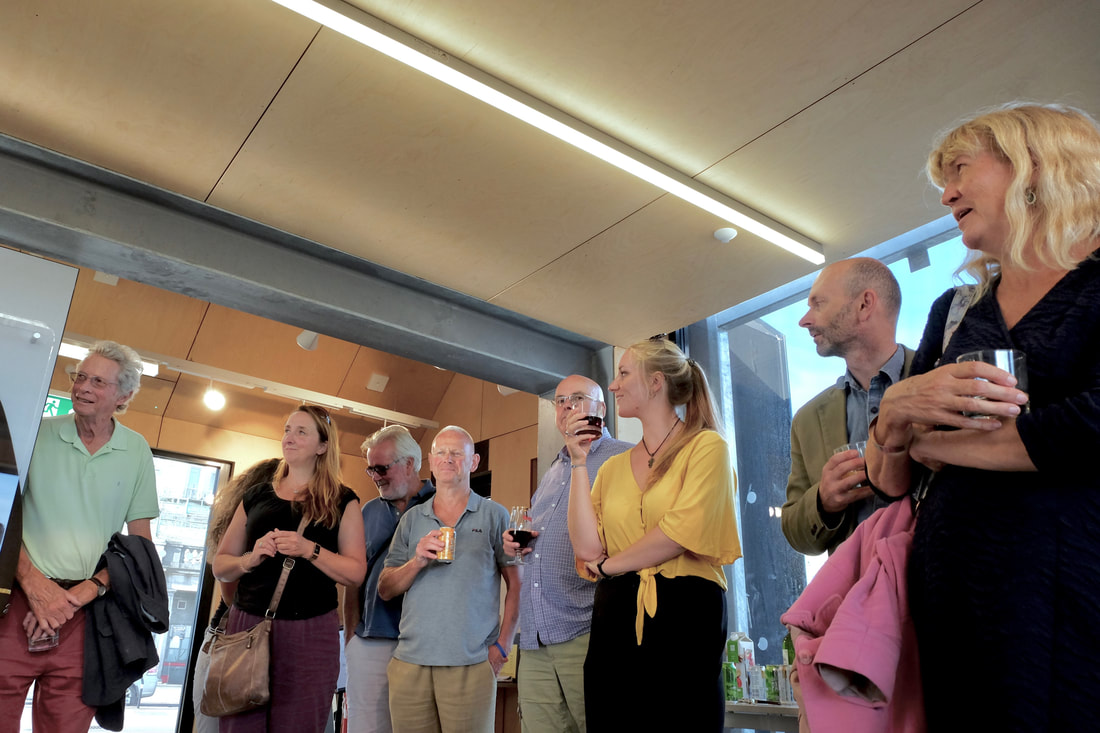
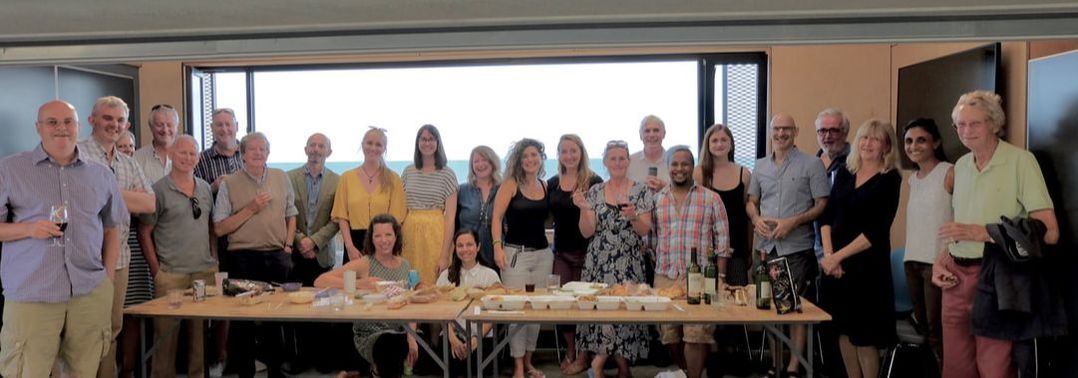
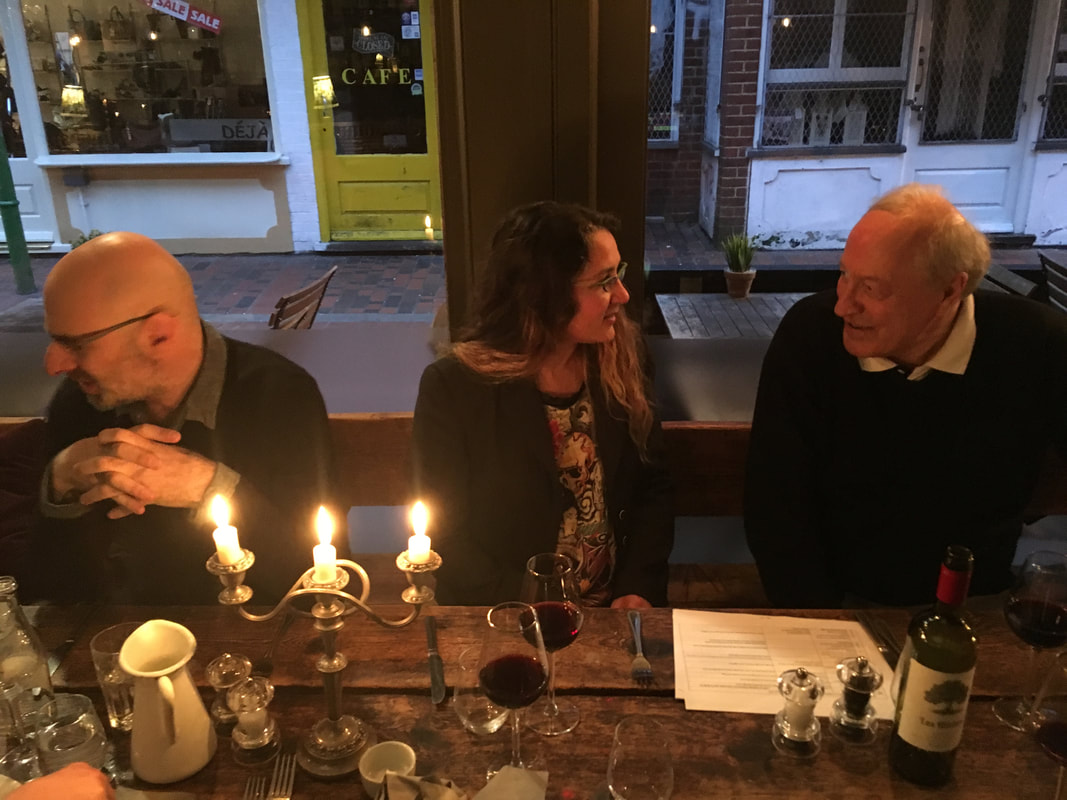
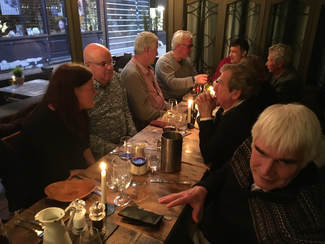
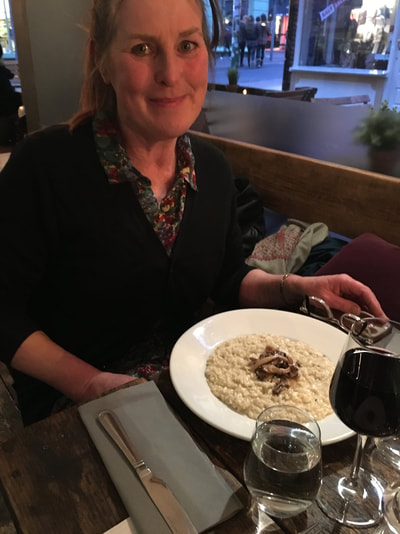
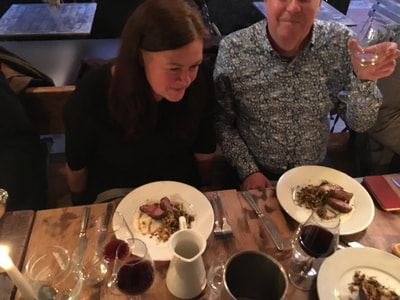
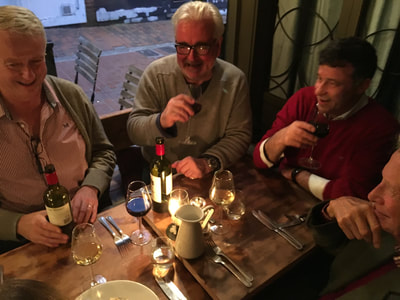
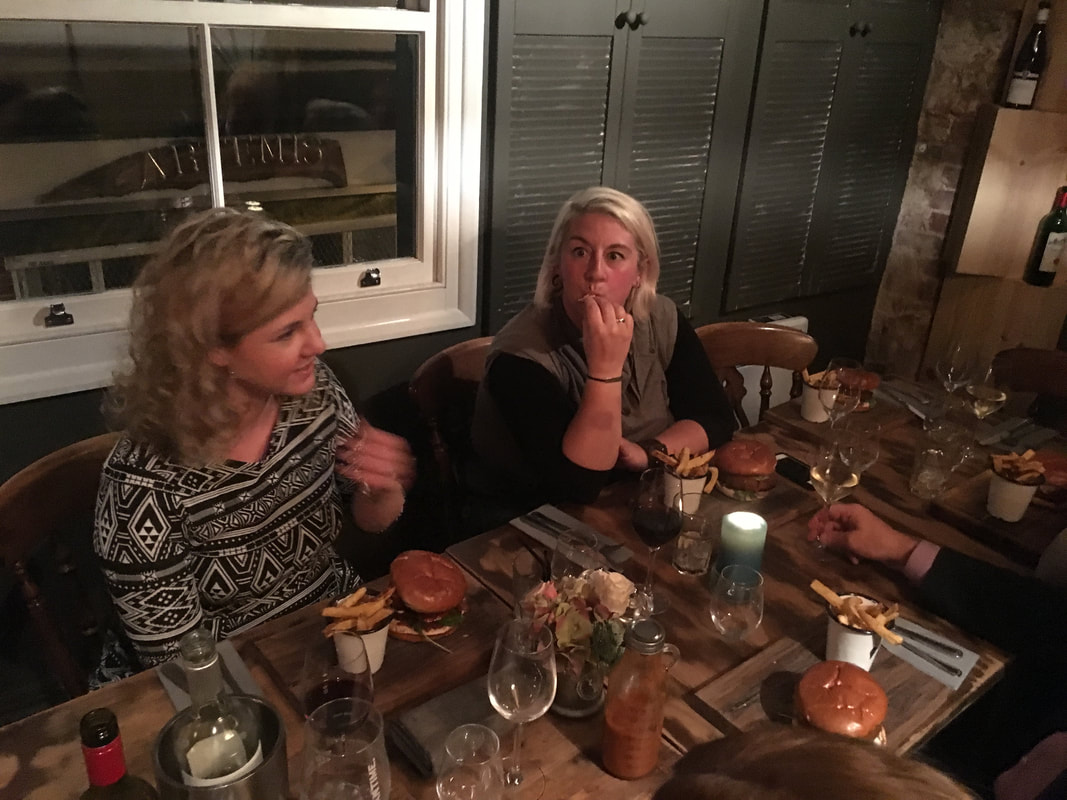
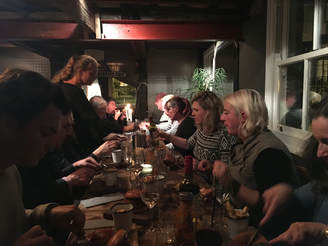
 RSS Feed
RSS Feed
